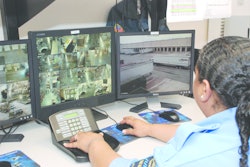
When you hear the phrase recall preparedness, it implies a strong system of track and trace within an organization, backed by computer data about origins of ingredients for products, and information about where finished goods are within the supply chain. But it’s important to realize that putting these data systems in place benefits food safety even if a recall never occurs.
At our company we use the term “inventory genealogy” to describe knowledge about which lots of raw materials have been used in a final product. And with good technology that can be traced to products on retail shelves. This visibility is great for a precision recall where the exact lot code and exact locations are known, but it also provides a strong foundation for tracking supplier performance, detecting equipment prone to contamination, and it even identifies employees with poor food safety practices who might need additional training.
When you watch the news, you get a clear picture of how well a food company has its house in order based on how they conduct a recall. Are they recalling everything, or just specific lots? Inventory genealogy often allows a very specific precision recall. For example, a precision recall can pinpoint lot codes 352 and 353 in Iowa, where there are 3000 units that need to be recovered. In such an instance, you can tell the manufacturer has strong processes in place.
Our proactive customers practice mock recalls so they are prepared for such events. Management wants to ensure that everyone is trained across the network, so the box of granola with screws in it can be brought back. It’s like a fire drill. You can assume everything is in order, but in a drill you might realize somebody is purging shipping data, something you might never have otherwise determined.
In a recall the trail of the tainted goods should be identified upstream and downstream. Maybe contaminated sugar was used in a breakfast cereal product. A good manufacturer can identify which machines used the sugar, which products contain it, production dates and times, lot codes, who the sugar supplier was, and how many plants received the faulty ingredient. This allows you to identify where that product is within the warehouse, in transit between facilities, which customer shipments are affected and how many units were shipped. This is a full upstream and downstream genealogy analysis of the product.
Today, it’s often true that companies use a common, single database for all this data to provide more real-time info and prompter access to the details related to finished products. With integrated systems, a quality control employee can push a button to put all the inventory on hold and it can even trigger the retailer POS system to disable that item. Ideally a consumer could be stopped in a checkout line by the recall because the UPC code on the item can no longer be scanned. Speed and recovery are key. If it takes two weeks to figure out where the products are then it’s too late.
Yes, benefits of preparedness include decreased liability, better protection of your brand and lower costs in a recall. But in the bigger picture, better tracking and data systems help manufacturers improve processes and identify weak spots that need attention. That kind of improvement reduces quality issues. Therefore, food quality can benefit from recall preparedness and you might even reduce your chances of a recall in the future.

















